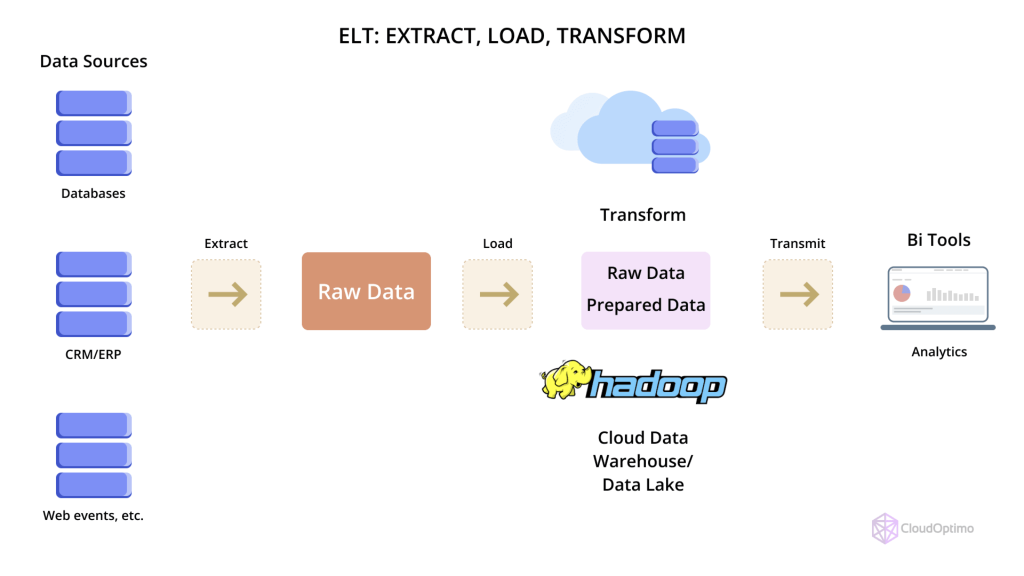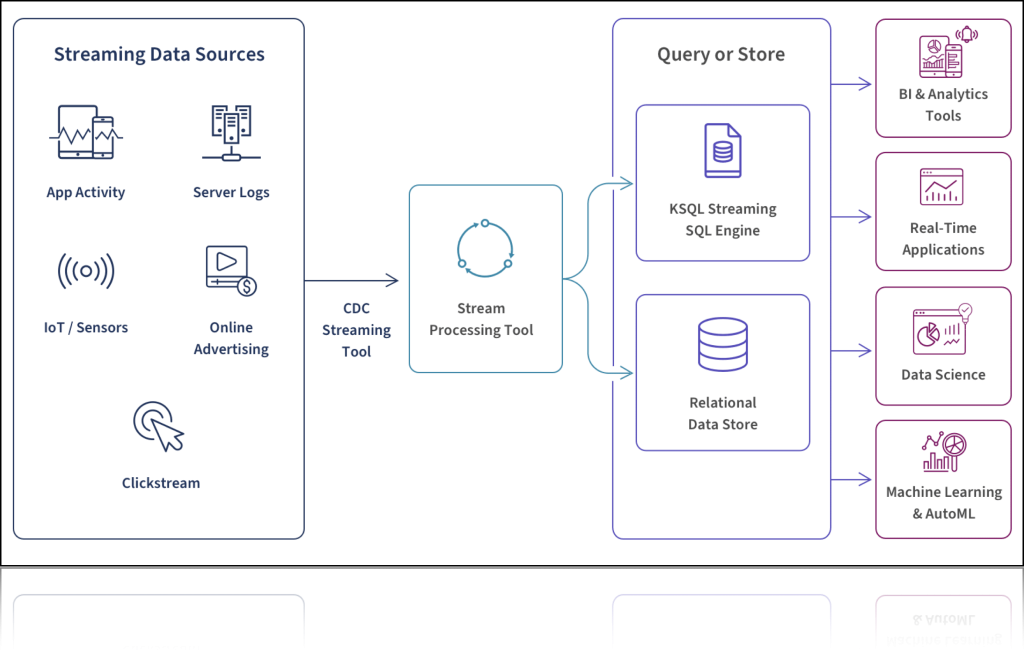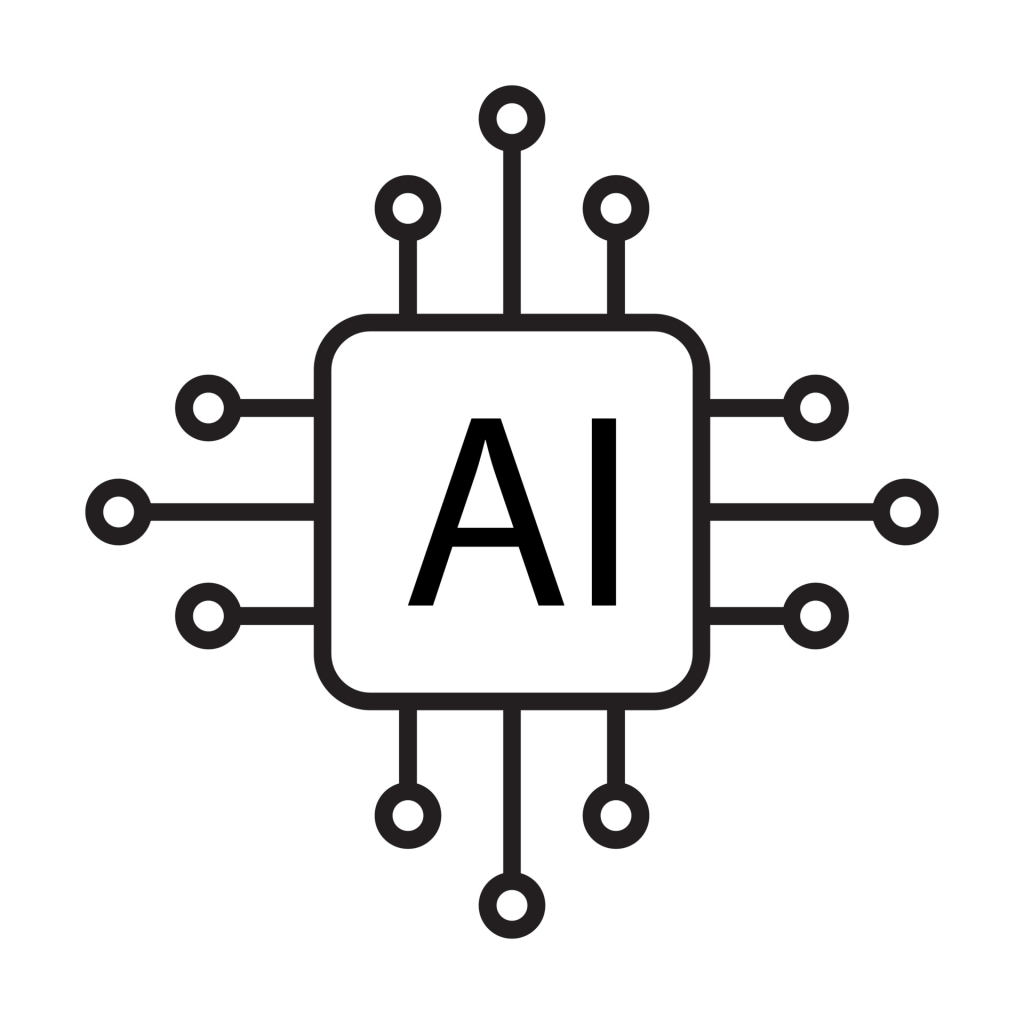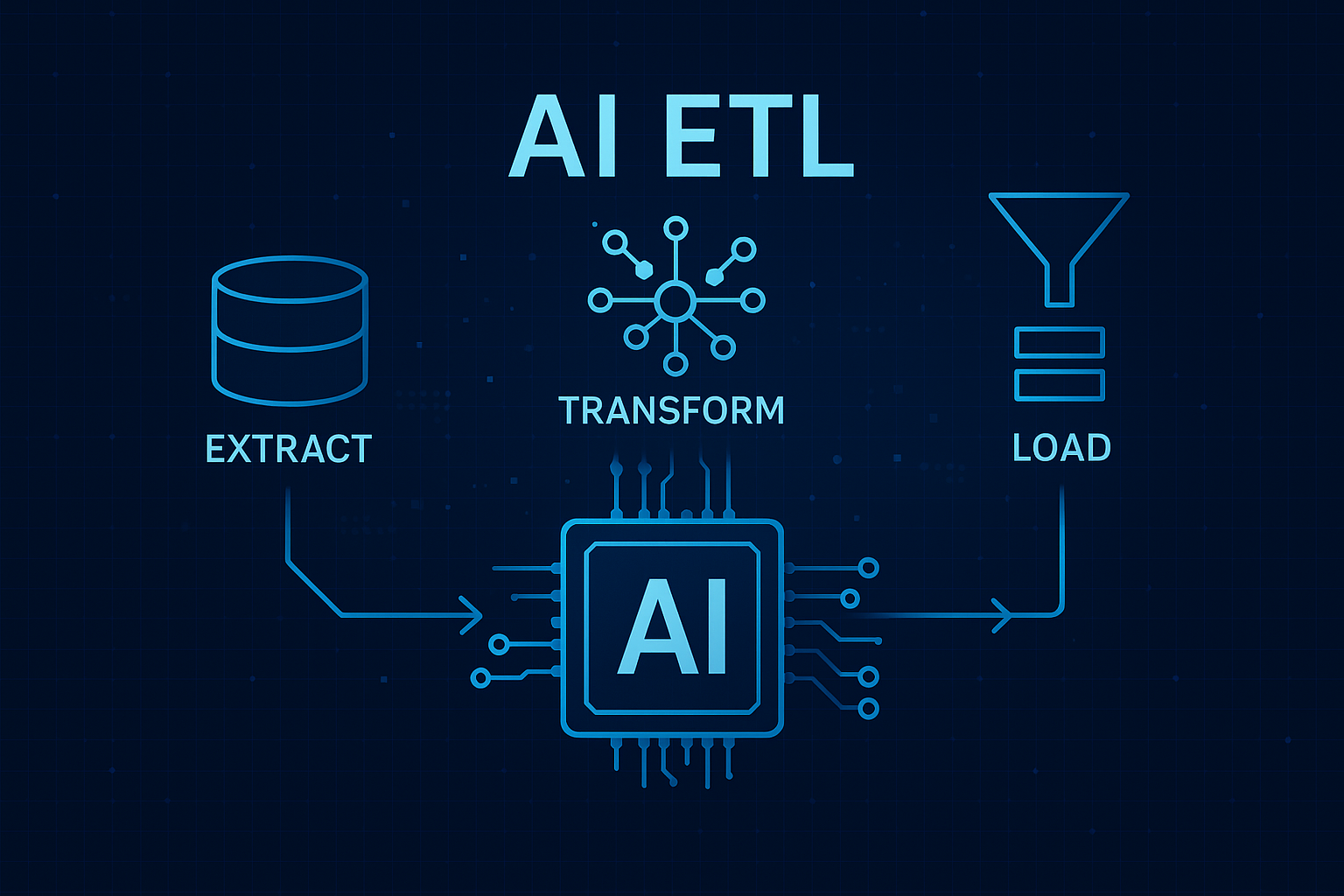Data Is Exploding and ETL is Evolving: The Rise of AI-Driven Data Integration
Why Now?
In 2024, statistical projections estimated that the total volume of data created and consumed globally would reach 150 zettabytes and indeed, the actual figure was 149 zettabytes, very close to the forecast.
By 2025, the estimate rises to 181 zettabytes, and by 2028 it will reach 390 zettabytes more than double in just four years.
Remember:
1 Zettabyte = 1 trillion Gigabytes = 10²¹ bytes.

But with data growing at such a staggering rate, can our classic ETL processes still keep up?
Let’s explore how ETL has evolved to meet this new reality.
Classic ETL:
The traditional ETL (Extract–Transform–Load) process follows a strict sequence:
data is extracted, transformed according to predefined rules, and finally loaded into a warehouse.
It typically runs on-premises, in nightly batch jobs,
and for decades has been the backbone of financial reporting and BI systems.

However, as data velocity and diversity increase, classic ETL struggles with:
- Real-time ingestion,
- Schema drift and frequent changes,
- Semi-structured or unstructured data.
In a legacy setup, critical updates like sales counts or low-stock alerts are processed in time-consuming batches.By the time the data arrives, it’s already stale. A delay that, in business terms, can translate to millions in lost revenue.
As data ecosystems expanded, new paradigms emerged to overcome ETL’s limitations:
Alternatives: ELT (Extract–Load–Transform), CDC (Change Data Capture), and Streaming Processing.
ELT: The Default for the Modern Era

Unlike ETL, ELT loads data before it is transformed.
The raw data is first sent to a data warehouse or data lake,
and transformations occur within that environment often leveraging distributed systems like Apache Hadoop or Spark.
Key benefits:
- Handles massive data volumes without staging layers.
- Offloads transformation to the compute power of modern warehouses.
- Provides direct pipelines to feed AI and ML models.
In short, ELT is ETL reimagined for the cloud and big-data world.
During the Extract phase in ELT, data ingestion allows real-time data movement across systems. These continuous data flows not only streamline integration but also feed AI and ML models with fresh, high-quality information.
Data Ingestion Framework:

CDC: The Engine of Real-Time Data
Change Data Capture (CDC) continuously monitors database transactions —
inserts, updates, deletes — and propagates them in real time to downstream systems.
It’s essentially a real-time ingestion method,
and forms the backbone of AI/ML pipelines that need up-to-the-second data.
Common CDC techniques:
- Log-Based CDC: Reads database transaction logs (e.g., Debezium) and streams changes to Kafka topics.
- Trigger-Based CDC: Uses database triggers to capture changes into audit tables.
- Timestamp/Version CDC: Queries records with last_updated > previous_run_timestamp.

Real-Time Processing: The Power of Streaming Data
Once CDC events are captured, streaming frameworks continuously move them
from source to destination without waiting for batch loads.
Every data event is processed the moment it’s detected by the ingestion layer.
This enables real-time analytics and decision-making —
no waiting, no aggregation delays.
Core technology:
- Apache Kafka for message transport:

Perhaps the most powerful aspect of CDC and real-time processing is their ability to feed AI and ML models with continuously refreshed data, ensuring that predictions and insights are always based on the latest information.
AI + CDC: Real-World Scenarios
Banking – Fraud Detection
- Source: Core banking systems.
- CDC: Captures card transaction changes → Streams to Kafka.
- AI Model: Real-time anomaly detection.
- Outcome: Fraudulent activity flagged and blocked in milliseconds.
E-Commerce – Personalized Recommendations
- Source: Order and behavior databases.
- CDC: Detects add/remove-to-cart events.
- AI Model: Recommendation engine (Matrix Factorization, RNN-based Deep Learning).
- Outcome: Product suggestions refresh instantly as the user browses.
Healthcare – Predictive Analytics
- Source: Patient records and lab results.
- CDC: Captures new or updated test results.
- AI Model: Predictive model (e.g., Sepsis risk model at Duke University).
- Outcome: Real-time alerts to clinicians; faster intervention, better outcomes.
AI ETL: The Next Leap in Data Automation
Today, AI doesn’t just consume ETL output, it’s becoming part of the ETL process itself.
AI-driven ETL (AI ETL) enhances pipelines with intelligence, automation, and learning.
1. Automated Schema Management & Mapping
AI ETL detects and resolves discrepancies between sources automatically.
- “customer_id” ↔ “cust_id” → Auto-mapping suggestion (SnapLogic AutoSuggest – Iris AI)
- “VARCHAR → INT” → Data-type reconciliation (Integrate.io)
- Semantic matching and entity resolution via ML (AWS Glue FindMatches)
2. Anomaly Detection & Data Quality
Machine learning models monitor pipelines for outliers and irregularities.
- Average daily orders = 10k → suddenly 500k → flagged as anomaly (AWS Deequ)
- Missing, inconsistent, or ill-formed data is caught before ingestion completes.
3. Self-Healing Pipelines & Root Cause Analysis
When a pipeline fails, AI ETL systems automatically:
- Detect the failure, restart jobs, and choose the optimal retry path.
- Run RCA (root cause analysis) using logs, metrics, and events.
Example: IBM Watson AIOps combines NLP + anomaly detection to suggest:
“Increase executor memory” or “Restart Spark job.”
4. Predictive Resource Allocation (Scaling & Retry)
AI learns from previous pipeline executions to predict future workloads.
- If data inflow triples at the start of each month → AI scales CPU/workers proactively.
Example: AWS Glue Job Bookmark + ML for predictive scaling.
This reduces both latency and cost while maximizing throughput.
5. NL→SQL and Low/No-Code Experience
Users can query data in natural language:
“Show regional sales for the last 3 months.”
AI ETL translates this into SQL and executes it automatically.
(Databricks AI/BI Genie or open source LLM& Agents)
Non-technical users can define transformations visually,
while engineers focus on logic, not syntax.
The New Anatomy of Data: AI ETL as the Brainstem of the Enterprise

AI ETL understands, predicts, recovers, and explains data.
IBM once compared modern ETL to the human brainstem,
the core that carries vital signals between the body and the mind.
Likewise, AI ETL transmits data signals across the digital nervous system,
fueling intelligent, responsive business decisions.
As data multiplies, so does complexity but AI ETL turns that complexity into clarity.
It’s not just a data pipeline anymore, it’s the neural pathway of new intelligence.

Leave a Reply